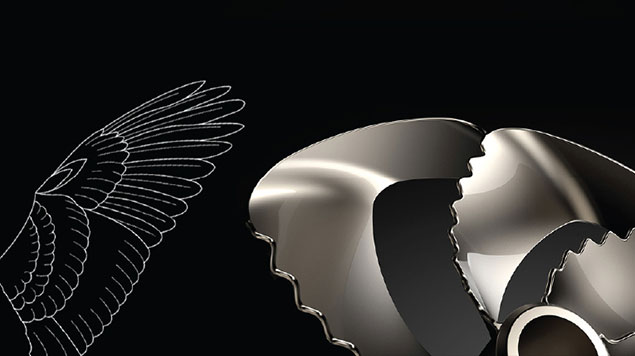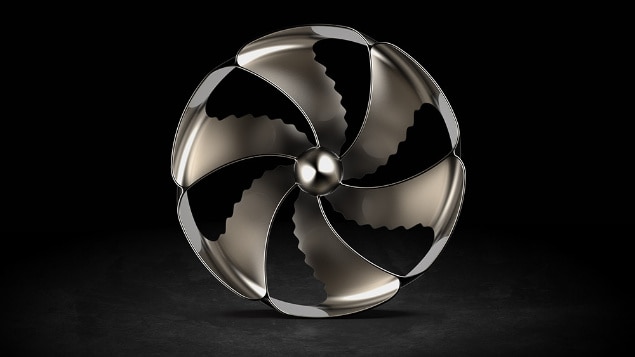Over millions of years, species of plants and animals have evolved to survive the elements, fly higher, run faster, grow taller, protect themselves when vulnerable. The lessons we learn from nature can often be applied in designing industrial objects.
A new e-book by BigRep explores how botanical and zoological research can provide a foundation for bionic design: drawing on elements within nature to optimize products and technologies with 3D printing. In the summer of 2017, BigRep decided to explore the potential of propeller production based on bionic principles, using its powerful 3D printer The ONE.
Inspired by a propeller innovation from the Technical University of Berlin (TU), BigRep Industrial Designer Florian Schärfer developed a Bionic Propeller model that combined two key bionic research principles to make a conventional design more efficient.
The propeller design has loop ends with no end part, based on the pinions of bird wings, which, when splayed out, enable birds to glide with ease and low-noise emission through the air. Furthermore, six ridges visible on the edge of each propeller blade are based on bumps along the fins of Humpback whales. When the propeller is rotating, air travels faster through these ridges, with less drag.

“Both of these bionic principles work in water and air,” said Schärfer. “So, it could be adapted to small ventilation fans to wind turbines to water or air propellers.”
The result is a propeller that reduces turbulence caused by air or in-water cavitation. Tests with a computer vent designed this way revealed 30% less noise emission, and tested as a ship propeller it raises the thrust performance by around 19%. Like the Berlin-based researchers who developed the loop principle propeller, more and more teams of researchers are discovering and applying bionic principles that make conventional designs more efficient.

The BigRep ONE revolutionizes the process of casting a propeller by shaving significant time off the production of an initial mold. “The bionic propeller model can be printed in days instead of being milled and shaped by hand over a period of weeks,” said Schärfer. “The process has traditionally been laborious, but with large-scale 3D printing, the prototype can be created as one single, seamless form.”
